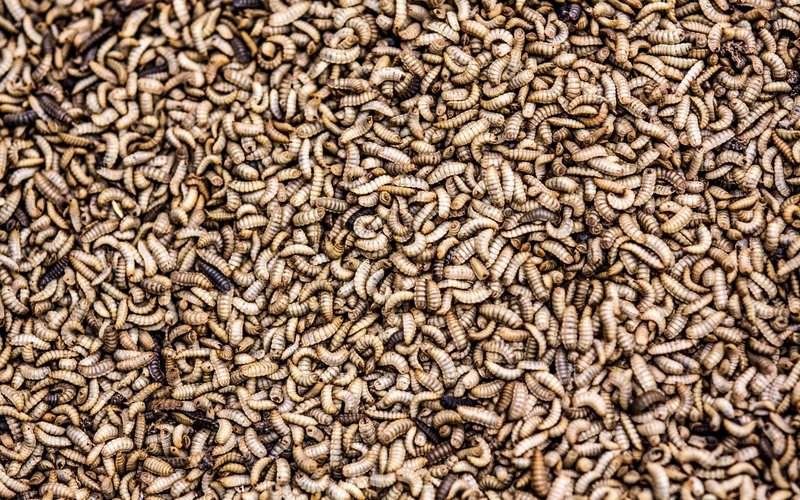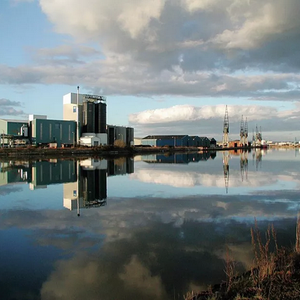French insect company Ynsect recently announced it entered a safeguarding procedure as it failed to find enough financing for expansion plans. This situation brings to light rising concerns over the high production costs associated with insect farming in Western countries.
The European insect industry has experienced remarkable growth in recent years, establishing itself as a global leader in technical expertise and industrial scale. Yet, the sector still has untapped potential and challenges like addressing high costs.
The path to economic scaling in Europe
According to the International Platform of Insects for Food and Feed (IPIFF), feedstock is the largest cost for these operators, accounting for 50-90% of their expenses, while energy averages around 10-30%. To reduce costs, IPIFF member companies are forging partnerships within and beyond the animal feed supply chain. These include collaborations with pet food and aquafeed producers, soil and biomass companies, and renewable energy providers, aiming to optimize production costs and eco-friendly logistics.
But how can the economy of scale be fueled in Europe? “Substantial investments in breeding and processing technologies, including automation and controlled environment production systems, or the development of new products and functionalities, thereby reducing production costs can help. In this regard, it is also worth noting that our industry is at the forefront of innovation. If Europe wants to have competitive agriculture, Europe needs to recognize the potential of innovative startups and scaleups by encouraging investors to do what they do best – take calculated risks, and invest in game-changing companies,” IPIFF said.
Though EU insect producers face higher regulatory and operational hurdles, establishing insect farms remains viable, particularly when leveraging cost-saving approaches like factory co-location near feed and heat sources. Additionally, outsourcing specific operations—such as egg production and processing—and working with specialized suppliers can also reduce expenses, according to Thomas Farrugia, CEO of Beta Bugs.
Innovafeed highlights essential levers for lowering costs: collocating with raw material and energy providers to maximize synergies on these cost items, scaling production volumes, enhancing zootechnical performance, and improving operational efficiency. “Capital expenditures can yield strong returns when considering all product outputs—meal, oil, and frass—and delivering them at scale,” Clément Ray, CEO of Innovafeed added.
Some companies are taking a staged approach to growth. Innovafeed has chosen to scale its production site in France through defined phases that have served as key milestones, allowing the company to progressively increase production volumes. “This step-by-step strategy not only reduces risk but also minimizes the capital intensity of each phase, ensuring a more sustainable growth trajectory,” according Ray.
Protix has also focused on operational and financial stability. “Our step-by-step growth, focused on solid business fundamentals, has enabled us to lead in revenue and capacity. We are the first insect ingredients company with proven stable, cost-competitive and scalable production,” the company said.
Meeting global standards with European quality
European insect producers deliver some of the highest-quality products on the market, which have garnered trust from both European and international buyers. This quality, backed by regulatory milestones, has enabled several IPIFF members to secure approvals in the U.S. and other markets, supporting the sector's economic stability.
As active participants in the global market, European insect producers face competition from regions with different regulatory standards. “However, insect producers provide locally produced solutions to European consumers, farmers and feed manufacturers, contributing to connecting agri-food supply chains, thus boosting rural economies in Europe, while reducing the dependency on imported sources of proteins. That latter also contributes to reductions in CO2 from transport,” IPIFF said.
Regulatory milestones and future prospects
The EU’s recent regulatory reforms represent a significant milestone for the European insect sector, providing much-needed stability for companies to plan investments and business operations. “These milestones indeed gave ‘regulatory visibility’ for the concerned companies to secure their investment plans and organize their business and commercial activities. In that regard, the EU landscape contrasts with the regulatory landscape observed in many other regions of the world where such guarantees do not exist,” said Christophe Derrien, IPIFF Secretary-General.
IPIFF is advocating for processed insect frass to be registered under EU fertilizer legislation, enabling its use across European markets as a fertilizing product. The organization is also working closely with the European Commission to expand the range of legal feed substrates, potentially allowing meat- and fish-containing former foodstuffs. “Such regulatory changes would constitute a game changer for many European insect producers enabling them to substantially reduce the costs associated with feedstocks, while efficiently upcycling biomasses that are currently underused, thereby further diminishing the environmental footprint of the insect sector,” IPIFF concluded.










